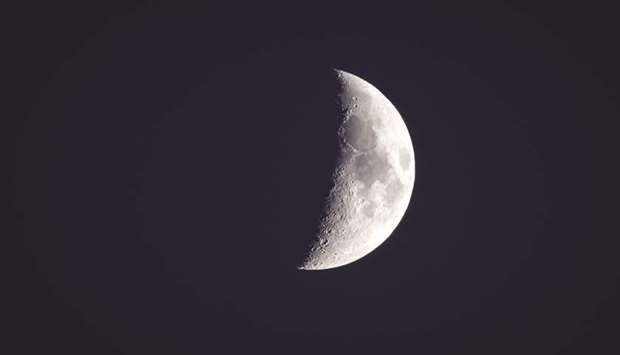‘Every administration wants to go back to the moon and no administration wants to actually put the money down that it will take to do that,’ senior space analyst Marco Caceres tells Samantha Masunaga No humans have walked on the moon since 1972, when the Apollo 17 crew left the lunar surface.
Since then, returning to the moon has been an almost perennial refrain among US presidential administrations. Last week, Vice President Mike Pence announced that the Trump administration aimed to send astronauts to the moon within five years.
It’s not a universally popular idea. Apollo 11 astronaut Buzz Aldrin, who walked on the moon in 1969, has worn shirts emblazoned bluntly with his preference toward Mars for any future crewed space exploration. Given the limitations on Nasa’s budget, some think resources would be better used for a push toward Mars.
And the timing of a moon landing may be seen as a political exercise, as it would occur around the end of the Trump administration, should the president be re-elected, said Marco Caceres, senior space analyst at market research firm Teal Group.
But Nasa has said a so-called lunar gateway in orbit around the moon could help astronauts explore the lunar surface more thoroughly than during the Apollo era. And last year, a team of scientists directly observed “definitive” evidence of water ice at the moon’s poles, buoying hopes that it could be used as a resource not only for astronauts on the moon, but those travelling to Mars or other destinations.
“The moon isn’t the ultimate goal,” said Laura Forczyk, owner of space consulting firm Astralytical, describing it as a “steppingstone.”
The idea behind a lunar outpost is that astronauts could have a home base from which to perform studies in lunar orbit and also conduct shorter missions to the moon’s surface.
“We’ve only touched the surface of it,” Forczyk said. “We really haven’t done much. It’s equivalent to landing at LAX and saying you’ve been to Los Angeles.”
From there, Nasa could work its way up to building a sustainable presence — or permanent base — on the moon, Forczyk said. That base could enable astronauts to train for longer-term operations on other planets, such as Mars. And further exploration and mining of the moon’s resources, such as water ice, could be broken down into hydrogen and oxygen, which could be used in propellant farms to fuel rockets going elsewhere in the solar system.
Nasa Administrator Jim Bridenstine said in an interview in February that the agency’s Space Launch System rocket, which is intended to take a crew to the moon and beyond, will be powered by liquid hydrogen and liquid oxygen. Development of that rocket is behind schedule and over budget, leading Pence to indirectly chasten its builder, Boeing Co., by saying that the Trump administration was not committed to “any one contractor” to get back to the moon.
A return to the moon might not necessarily be solely a government endeavour. Pence said last week that if a commercially developed rocket was the only way to get to the moon in the five-year time frame, “then commercial rockets it will be.”
The potential for commercial partnerships means that private companies such as Jeff Bezos’ Blue Origin or Elon Musk’s SpaceX could one day play a role.
Musk has long espoused his goal of colonising Mars and making humans a multi-planetary species. To accomplish that goal, SpaceX is building a spaceship called Starship and a rocket booster called Super Heavy. The company is testing a prototype of Starship at a facility in Texas.
Last week, Nasa said it will conduct ground tests on five prototypes of deep-space habitats developed by companies such as Lockheed Martin Corporation, Northrop Grumman Corporation and Boeing. Renderings of the habitats largely look somewhat similar to smaller versions of the International Space Station and would remain in orbit around the moon.
Last year, the space agency chose nine companies that could be eligible to bid on future contracts to take science experiments to the surface of the moon. Each of the companies is responsible for building robotic lunar landers.
But a true return to the moon will cost money, and analysts say the current Nasa budget of $21.5 billion won’t cut it.
“If we were really serious about sending astronauts on several missions to the moon, we would be jacking up Nasa’s budget by at least double or more. And nobody’s doing that,” Caceres said.
“Every administration wants to go back to the moon and no administration wants to actually put the money down that it will ta`ke to do that,” he said. “Everybody wants to aim high and re-create the spirit of American can-do-ism that we basically saw during the Apollo era.” —Los Angeles Times/TNS

